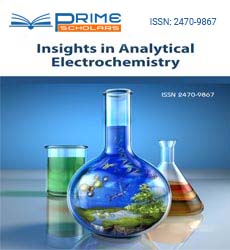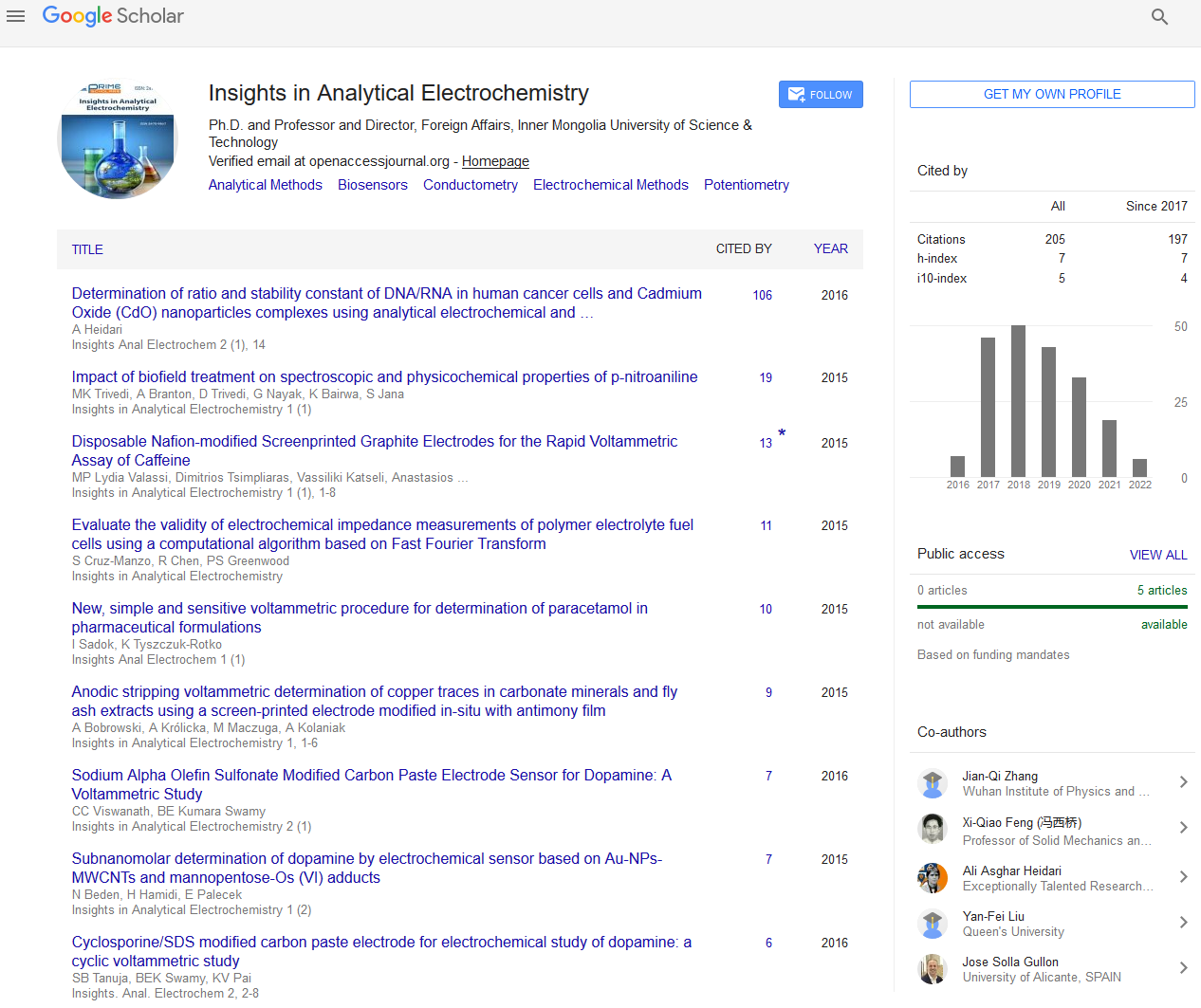Opinion Article - (2023) Volume 9, Issue 1
Advancements in Scientific Techniques for Identification of Pesticides in Natural Examples
Ming Xu*
Department of Electrochemistry, University of Jinan, Spain
*Correspondence:
Ming Xu,
Department of Electrochemistry, University of Jinan,
Spain,
Email:
Received: 01-Mar-2023, Manuscript No. IPAEI-23-16041;
Editor assigned: 03-Mar-2023, Pre QC No. IPAEI-23-16041 (PQ);
Reviewed: 17-Mar-2023, QC No. IPAEI-23-16041;
Revised: 22-Mar-2023, Manuscript No. IPAEI-23-16041 (R);
Published:
29-Mar-2023, DOI: 10.21767/2470-9867-9.1.10
Introduction
Biomonitoring of both presently utilized and prohibited tireless
pesticides is an exceptionally helpful instrument for surveying
human openness to these synthetic compounds. In this audit,
we present current methodologies and ongoing advances in
the logical techniques for deciding the biomarkers of openness
to pesticides in the most ordinarily utilized examples, like
blood, pee, and bosom milk, and in arising harmless networks
like hair and meconium. We basically talk about the principal
applications for test treatment, and the instrumental procedures
as of now used to decide the most pertinent pesticide
biomarkers. We at long last glance at what’s in store patterns
in this field.
Description
Plastics are among those materials advanced by people for
their need. They are profoundly unavoidable materials utilized
in many applications making our day‐to‐day exercises simple
in home, shop pressing, promoting, developments, and medical
care, because of their lightweight, compound steadiness,
accessibility, and can be utilized monotonously. To beat such
issues, many cycles, reactors and impetuses have been produced
for pyrolysis and synergist pyrolysis of biomass. A state
to the craft of pyrolysis or reactant pyrolysis of biomass should
be summed up to have a general assessment of the advancements,
to give a helpful reference to the further improvement
of pyrolysis innovation. This study surveys the different pyrolysis
process, particularly center around the impacts of fundamental
boundaries, the interaction plan, the reactors and
the impetuses on the pyrolysis cycle. Furthermore, progress
in commercialisation of pyrolysis innovation was additionally assessed and the excess issues during the time spent commercialisation
were talked about.
Lignocellulosic biomass can be convert to a condensable fluid
named bio-oil, a strong item named as roast and a combination
of vaporous items involving CO2, CO, H2, CH4, and so on. As
of late, much exertion has been made on the examination of
transformation of biomass through pyrolysis. Notwithstanding,
commercialisation of the biomass pyrolysis innovation is as yet
testing because of different issues, for example, the malicious
properties of bio-oil including the low warming worth and the
high flimsiness at raised temperatures. Their substitution for
regular assets, for example, metal lines and woody materials
acquires a lot of acknowledgment. Single‐use plastics like veils,
gloves, holders, clinical bundling, and utensils of the continuous
COVID‐19 pandemic are positively influencing waste plastic
administration. Plastics don’t have regular counterparts since
they can supplant numerous normal non-renewable assets like
metals, woods and glasses in various areas.
Conclusion
The interminable development of the utilization of plastics is
immense and has been raising consistently a result of the benefit
got from their adaptability, minimal expense, and sturdiness
all through the world. As displayed in Figure 1 beneath,
the USA drives the world plastic per capita utilization with 142
Kg/year. Almost 6.3 billion metric lots of plastics have been fabricated
in 2015, of which 79% of the absolute item was shipped
off landfill, 12% burned, and 9% reused. A big part of the complete
plastics fabricated in the European Association end up as
waste consistently and become the third‐largest supporter of
metropolitan strong waste (MSW) after food and paper squanders.
Citation: Xu M (2023) Advancements in Scientific Techniques for Identification of Pesticides in Natural Examples. 9:10.
Copyright: © 2023 Xu M. This is an open-access article distributed under the terms of the Creative Commons Attribution License, which permits unrestricted use, distribution, and reproduction in any medium, provided the original author and source are credited.

